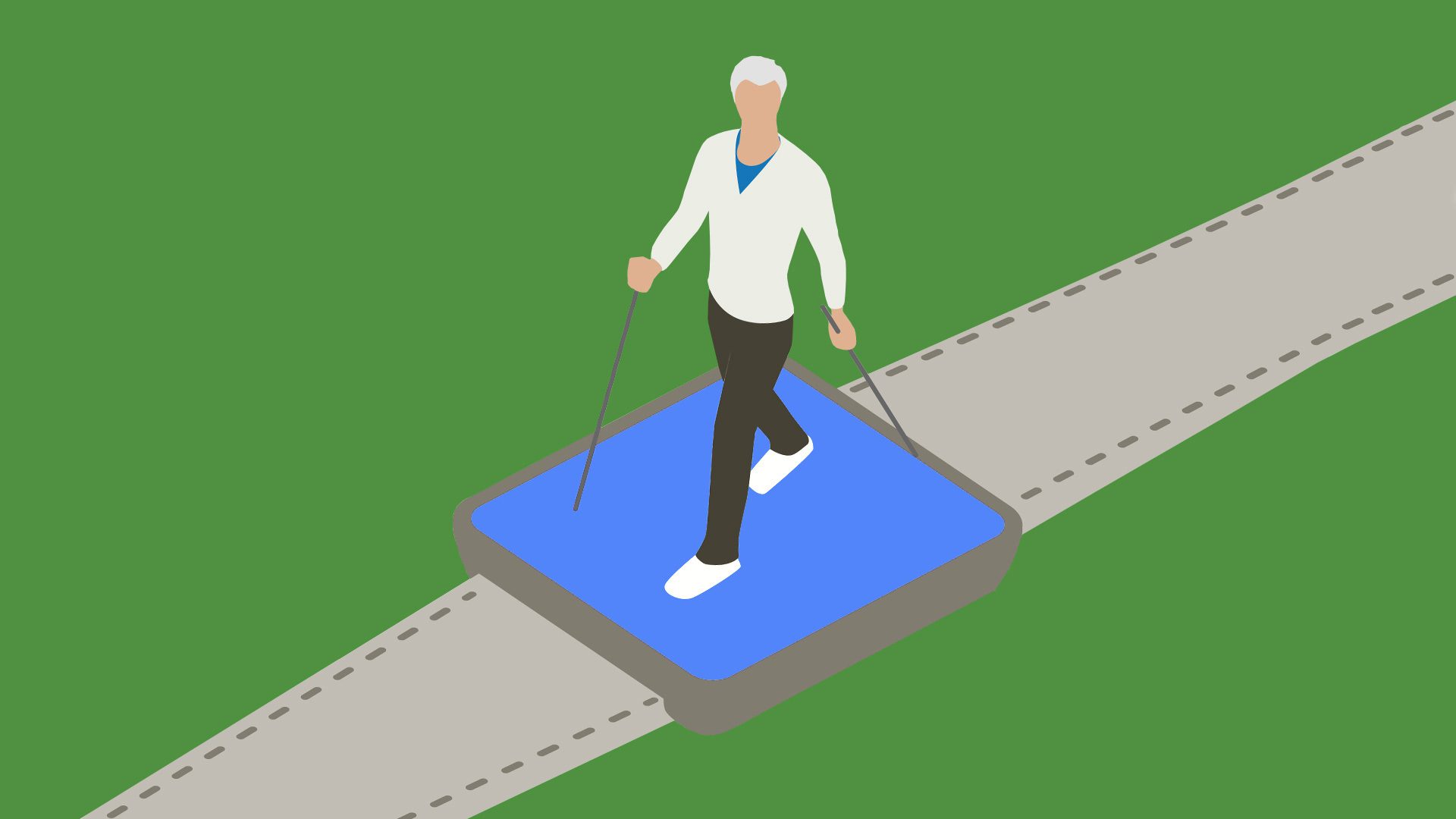- October 08, 2020
- By Hayleigh Moore
Wearable fitness trackers can dramatically boost activity levels, studies have shown, but as we age, changes in movement make them less useful gauges of exercise for some people.
Starting this month, a four-year, $1.2 million grant from the National Science Foundation will support College of Information Studies (iSchool) researchers and their partners at Penn State developing wearable technology that actually works for adults ages 60 and older.
While staying active is especially critical in maintaining functional abilities that allow this group to live independently, movement tracking can be a challenge because older adults often walk slower than most users of the devices, so the signal from their movement is more subtle. The resulting faulty data may be one reason older adults have adopted the trackers less than other age groups, with one 2019 Gallup poll showing people over 55 are half as likely as younger people to have used the devices.
“One barrier is that current physical activity trackers do not effectively identify and track older adults’ activities,” said Eun Kyoung Choe, an associate professor in the iSchool and principal investigator for the project at UMD. “Wrist-worn devices are able to pick up steps, but they can also pick up other arm movements that could skew step counts.”
Although fitness tracker users frequently focus on steps per day, the team will determine more appropriate measures of activity for older adults, said Penn State kinesiology Professor David Conroy, who is leading the research at that institution.
“We’re going to expand beyond capturing the frequency, intensity and timing of step counts to detect the type of physical activities that older adults are doing,” he said. “Developing the technology needed for older adults to teach connected devices how to recognize different types of activities in their daily routine will improve health and safety monitoring and create new possibilities for behavioral interventions to promote healthy aging.”
By understanding both older adults’ movement and sedentary activities that they wish to change, the UMD and Penn State research teams will create new personalized trackers that provide opportunities for users to better understand their own activity patterns as they interact with the devices.
“A revolutionary idea behind teachable interfaces is that the users themselves can teach the system how to recognize their movements more accurately by fine tuning it to their idiosyncratic movements and context,” said Hernisa Kacorri, an assistant professor in the iSchool.
The team, which includes experts from both institutions in human-computer interaction, health informatics, interactive machine learning, accessibility, aging, kinesiology and physical therapy, also plans to investigate the similarities and differences in usability for subgroups of older adults, such as people with mild dementia, and the adjustments needed to accommodate them.
In addition to Kacorri, Amanda Lazar, assistant professor in the iSchool, serves as the other co-principal investigator for the UMD team. Young-Ho Kim, a postdoctoral researcher, is also participating in the research.
Read more about the “Teachable Activity Trackers for Older Adults” project on the NSF website.
Topics
ResearchUnits
College of Information